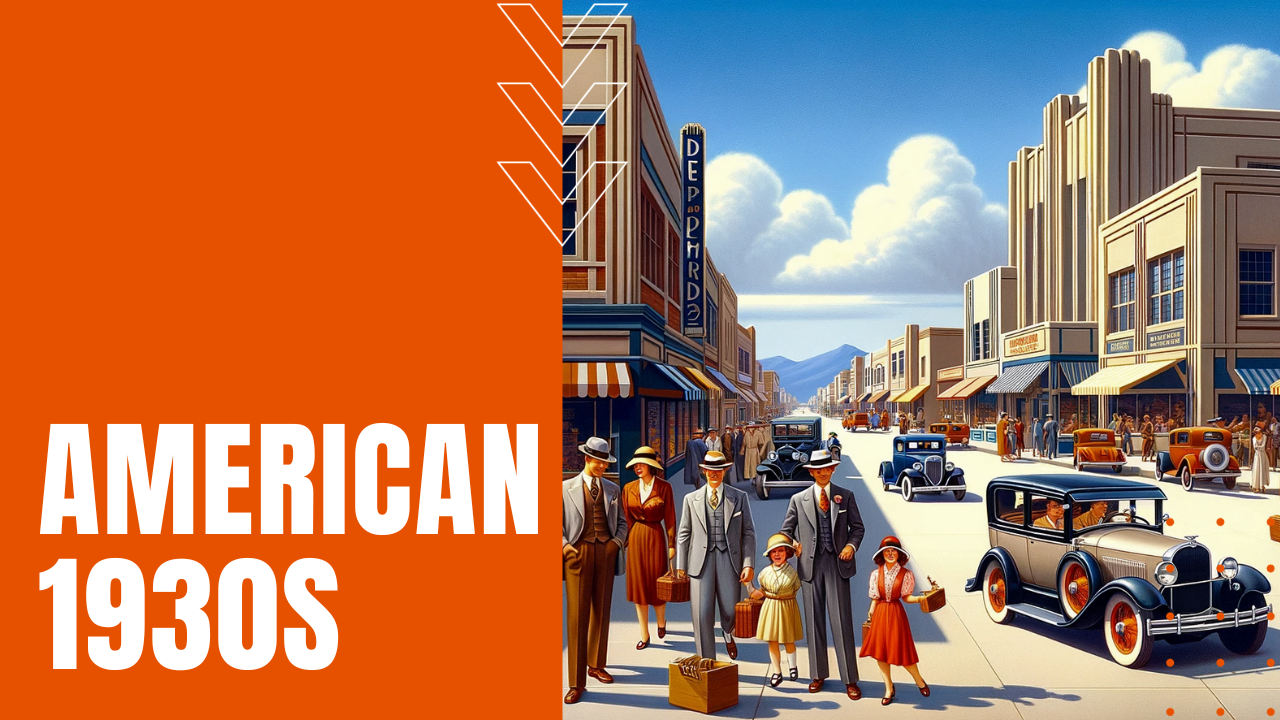The American 1930s

After the high times of the Roaring Twenties, by the end of the decade, a confluence of factors led to the Stock Market Crash of late 1929, followed by the Great Depression to follow, including runaway stock speculation, international instability caused by World War One and a punishing agricultural slump. During an age before federal oversight or intervention of any kind, as the worst hard time descended upon average Americans, more than 9,000 banks had failed by 1933, depriving Americans of their savings deposits, while the ranks of the unemployed climbed to 15 million Americans—a full 25% of the total American workforce.
No Federal Safety Net
Lacking government safety nets such as unemployment insurance or social security benefits for seniors, the consumer economy ground to a deafening halt. In response to the early years of the Great Depression, President Herbert Hoover maintained a hands-off policy that only worsened the nation’s plight, believing that “crazy and dangerous” Wall Street speculators were responsible for the nation’s woes. As more and more Americans lost their homes and farms to foreclosures and bank failures, shantytown encampments became known as Hoovervilles, named so as a direct insult to Hoover’s laissez-faire response to the national crisis.
Dust Bowl Migrations
To make matters worse, the Dust Bowl comprised yet another manmade disaster, when farmers in the Plain States over-tilled grasslands without planting tree breaks to block prairie winds, forcing 2.5 million Americans to abandon their farms in what became known as the “Dirty Thirties.” Other natural disasters compounded the nation’s woes, including the 1935 Category 5 Labor Day Hurricane that ravaged the Florida Keys, followed by a second Cat 5 hurricane that tore through New England in 1938. Sweeping the presidential election of 1932, after Franklin D. Roosevelt took office the following year, he implemented his First and Second New Deal policies to help a nation retake its feet, in his words, to “wage a war against the emergency.”
Cheers!
Ending Prohibition on December 5th, 1933, FDR pushed the Emergency Banking Act through Congress, before signing the Tennessee Valley Authority Act or TVA, which allowed the federal government to build dams along the Tennessee River for flood control and the generation of inexpensive hydroelectric power, followed by the National Industrial Recovery Act. During his Second New Deal, FDR steered the Social Security Act through Congress, at the same time creating the Works Progress Administration or WPA, injecting federally-funded jobs for the unemployed, which in turn improved the American infrastructure through the construction of post offices, bridges, schools, highways and parks.
